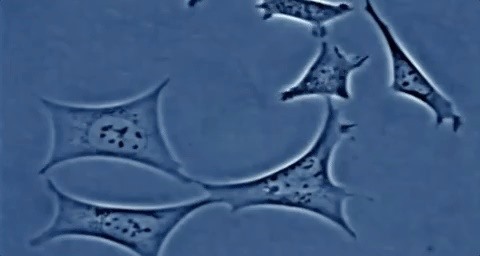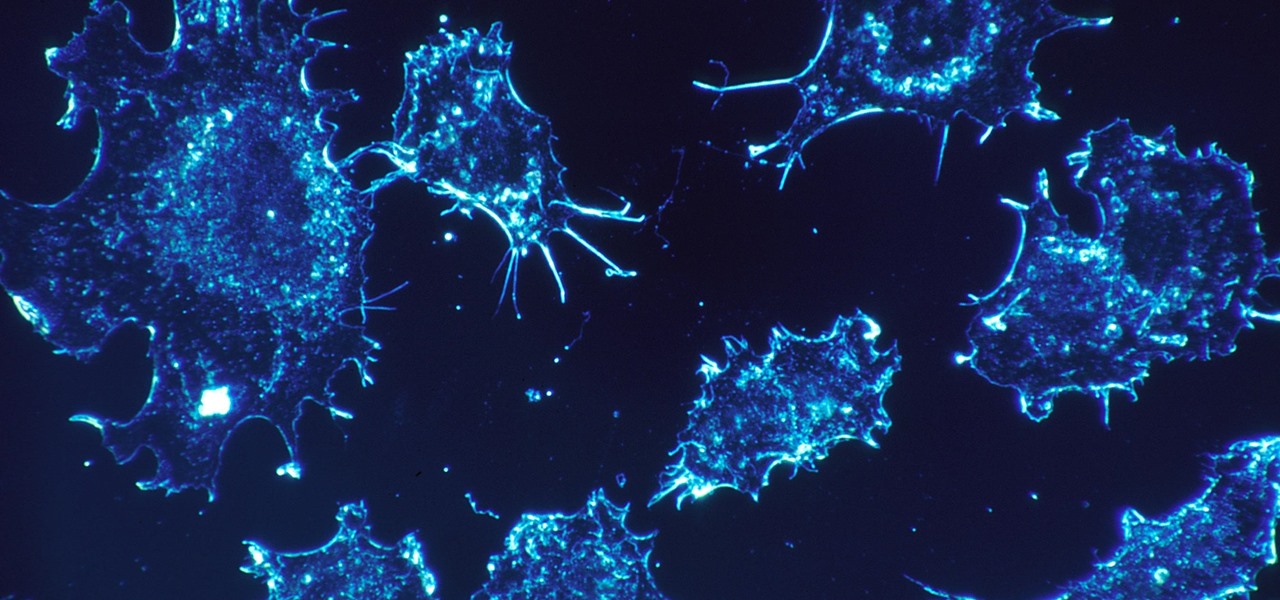As our cells age, they eventually mature and die. As they die, they alert nearby cells to grow and multiply to replace them. Using a special imaging process that combines video and microscopy, scientists have observed the cellular communication between dying and neighboring cells for the first time, and think they may be able to use their new-found information against cancer cells, whose damaged genomes let them escape the normal dying process.
Researchers from the Rush University Medical Center, led by Sasha Shafikhani, found dying cells release tiny particles containing CrkI protein. Those particles travel to nearby cells, spurring them to split and make new cells.
The researchers reported their discovery of how dying cells communicate in the June 19 issue of Developmental Cell.
Cell Death
Death is genetically programmed into our cells, the effects of which are a process called Apoptosis. About a million of our body's cells die this way every second. "Compensatory proliferation signaling" is the process these dying cells use to induce their neighbors to increase in numbers, maintaining essential functions and keeping the organism alive. How this works has been a mystery.
One thing we do know about apoptosis is that a long list of diseases alter cell survival by increasing apoptosis to create cell death: AIDS; neurodegenerative diseases such as Alzheimer's disease, Parkinson's disease, amyotrophic lateral sclerosis; and heart attack and stroke. Decreased or inhibited apoptosis is a characteristic of many cancers, autoimmune disorders such as systemic lupus erythematosus, and some viral infections. Cells in those conditions live longer than normal cells.

Solving the mystery of how dying cells communicate has been the goal of many research efforts. If we understand how dying cells provoke other cells to increase in number to replace them, then we might be able to figure out how to influence situations where apoptosis is increased or decreased.
Dying Cells Last Words
Shafikhani's lab didn't exactly set out to study cellular communication during apoptosis. They were studying Pseudomonas aeruginosa bacteria that secretes several toxins allowing it to cause infection. One of its toxins, ExoT, slows cell division, but it's also known to kill cancer cells.
The scientists were focusing their research on how ExoT kills cancer. That's when their microscopic videos showed that dying cells made and released a protein called CrkI-c, and ExoT could block that protein. When ExoT blocked CrkI-c, dying cells could not signal other cells to proliferate to replace them. The process helps Pseudomonas aeruginosa to establish their infection by ensuring damaged tissue was replaced.
Cancer cells circumvent the normal processes of cell death and many cancer drugs increase apoptosis to block cancer cells' survival. However, the study authors pointed out that this same cellular proliferation system could still be at work in cancer cells, allowing the spread of nearby cancer cells and limiting the effectiveness of chemotherapy.
The finding that ExoT blocks CrkI-c and the cellular proliferation system in apoptotic cells suggests that components of this system might be good targets to enhance the effect of cancer drugs. Therapies that target both the cancer cells and nearby cells that are ready to proliferate could help stop cancer from growing and spreading.
Just updated your iPhone? You'll find new emoji, enhanced security, podcast transcripts, Apple Cash virtual numbers, and other useful features. There are even new additions hidden within Safari. Find out what's new and changed on your iPhone with the iOS 17.4 update.


























Be the First to Comment
Share Your Thoughts